Do you want to get a tan but don’t know how long your tanning session should be? Well, this depends on several variables.
As a skincare expert, I’ll go over those aspects here, then give you an estimate of how long it will take for your tan to show and fade, so you can plan for a natural bronze body this summer.
Read more to find out!
Table of Contents
How Long Does it Take to Get a Noticeable Tan?
On a sunny hot day, it can take anywhere from 15 minutes to an hour to get a noticeable tan. However, depending on your skin tone, it can take up to two hours.
A study in 2008 showed that skin type and outdoor or indoor tanning also predicted tanning dependence [1].
However, it is critical not to spend too much time in the sun because of the risk of skin diseases and even skin cancer [2]. So limit your tanning session to a couple of hours.
To speed up the tanning process and spend less time in the sun, apply a decent tan intensifier or maximizer lotion. To be cautious, take 30 or 45 minutes if the sun is too hot.
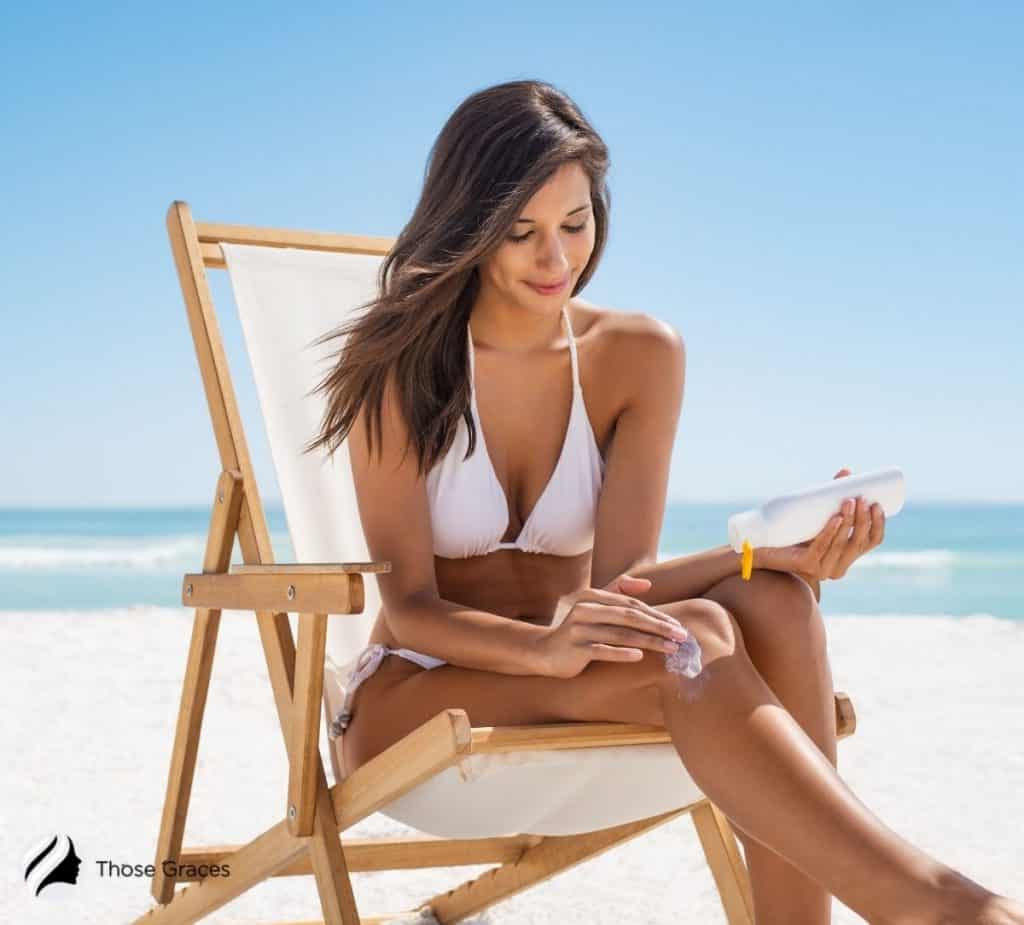
Make sure to check our list of effective tingling tanning lotions!
After all, how long does it take to get a noticeable tan in the sun without getting sunburned?
- One to two hours for fairer skin tones, on average. After a 15-minute tan, cool off with a shower. Then do it again.
- 20 minutes to one hour for darker skin tones, on average. Take a shower after 20 minutes of sunbathing. Then, to make it safer, return and take further shower intervals.
READ MORE: Best UV for Tanning
For some great tan-through swimwear, check out this video:
How Long Does It Take to Tan in the Sun?
It can take between 15 minutes to an hour to tan in the sun. Your skin starts tanning almost immediately it is exposed to the sun.
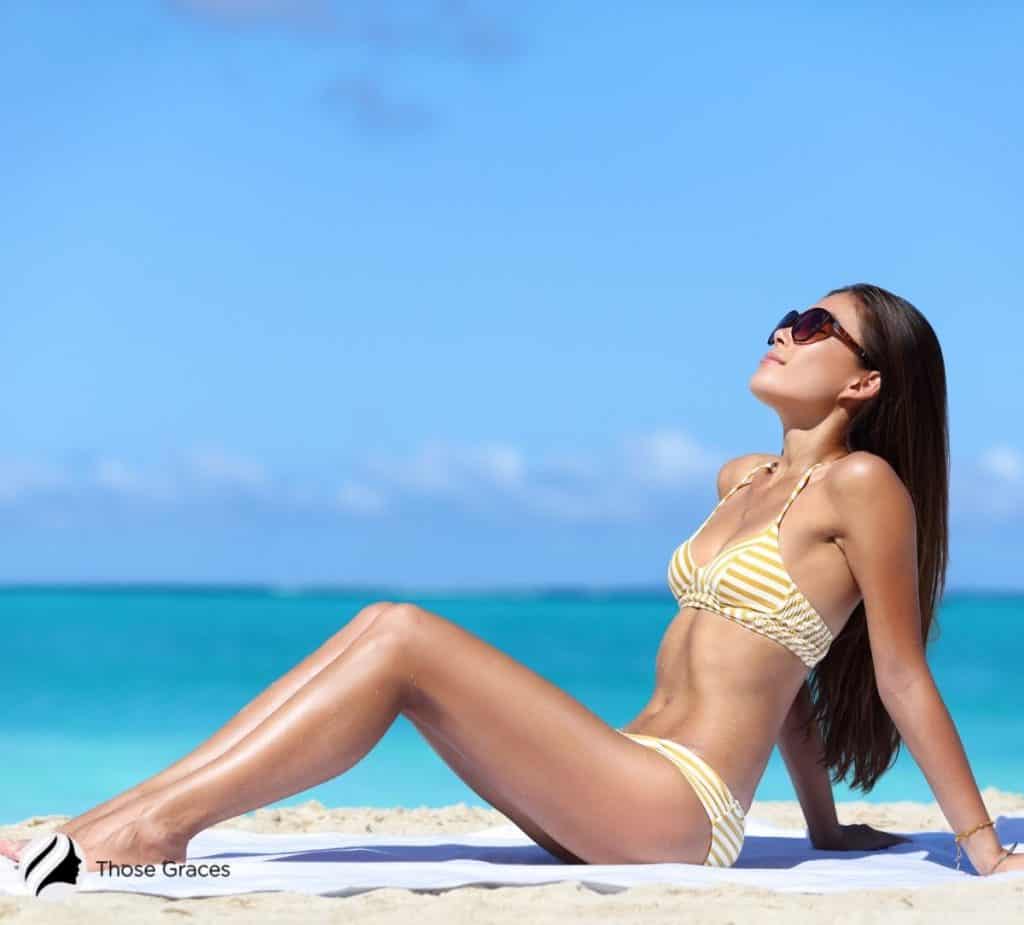
That’s why dermatologists recommend you wear sunscreen as frequently as possible.
If you forget to wear sunscreen, you will start noticing a tan after 15 -30 minutes in the sun.
According to the American Osteopathic College of Dermatology, with SPF 15 or higher, you will tan in a few hours. The sunscreen also blocks UVA light to prevent sunburn. [5]
The time it takes to tan in the sun also depends on the pigmentation of your skin. A darker skin person sunbathing near the beach will tan faster than a fairer-skin person on the same beach.
Check: How Long in the Sun for Vitamin D?
How Long Does it Take for a Dark Tan to Show?
The time it takes for your skin to naturally darken depends on your desired tan depth and skin tone.
Remember what I said above about one to two hours? In this time, most people will develop a base tan, while deeper tans usually take 24 hours.
You can continue to spend one to two hours in the sun every day once you’ve achieved your base tan until you get the desired effects.
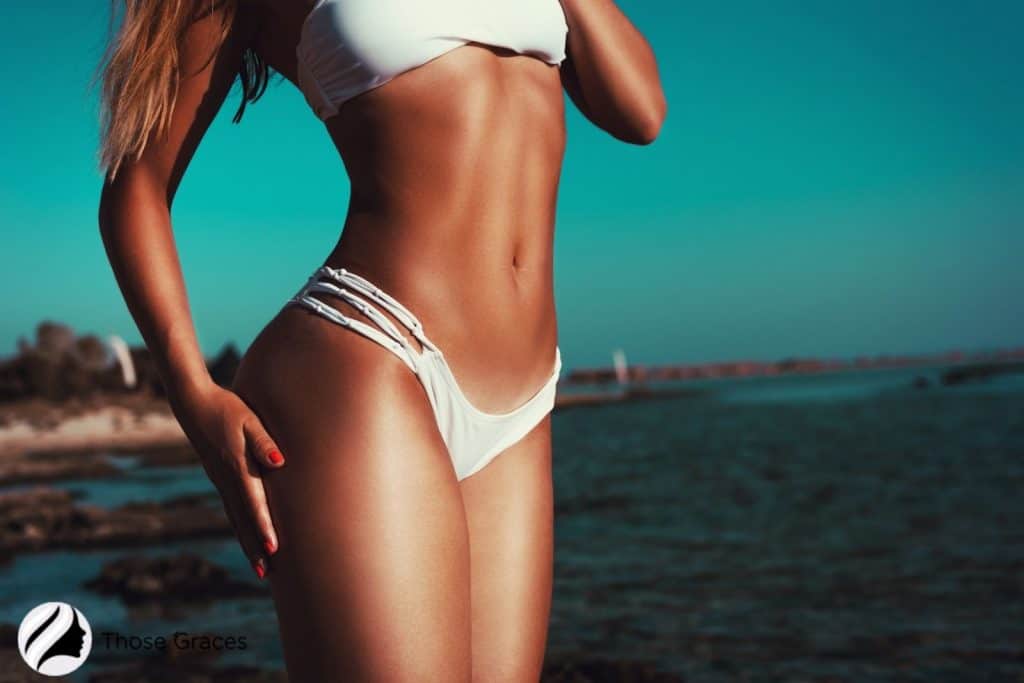
It’s always recommended to apply sunscreen before going outside for tanning, even on cloudy days. A study in 2014 [3] confirmed that exposure to sun or infrared radiations accelerates carcinogenesis.
How Long Does it Take to Get a Tan From a Tanning Bed?
The quality of the tanning bed where you intend to bronze will have a significant impact. Usually, you can only lie in a tanning bed for 10 to 20 minutes every session.
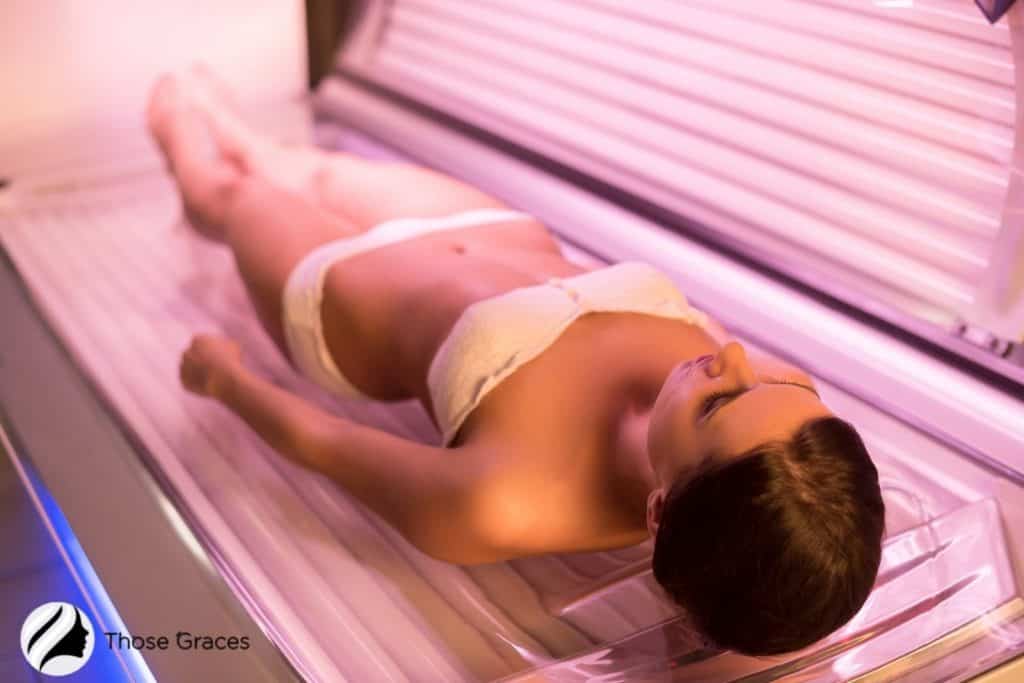
But it is advised that people who do not tan or tan poorly should avoid using sunbeds because of their side effects [4].
You should go to one session every week, according to the recommendations. Again, the time will be determined by your genetics and skin tone.
- For more pale skin, 10 minutes is the usual rule, and after the first session, you should see some benefits. However, after the second or third session, the ideal tan may show.
- Lighter-skinned people will require multiple brief sessions to get a noticeable tan. People with darker skin tones might have longer sessions, which means they’ll see benefits sooner.
Please keep in mind that there is also a genetic component to consider.
So, if you find it difficult to get a tan, you should be extremely cautious about exposing yourself to the sun or tanning beds simply because you do not see immediate results.
The trick is to have many exposure shooting sessions.
When you get a tan on a high-level tanning bed, and the specialist examines your skin and enables you to use a high-level bed level five or six, you can achieve fantastic results with just a 10-minute session per week.
How Long Does it Take to Get a Spray Tan?
The spray tan will start to show results immediately after it is applied to your skin, while ordinary to conventional methods might take up to 8 hours to set. You will feel the full effect when this time has passed.

You can also rely on express sprays, which take 3 to 4 hours to dry on your skin and reveal the complete results.
How Long Does a Spray Tan Last?
How long your spray tan will last can vary depending on the level of darkness you strive for.
However, it lasts up to 10 days if it’s darker, seven to eight days for medium tones, and five to six days for lighter tan sprays.
How Long Does It Take to Tan With Self-Tanners?
Good quality self-tans can take between 6 to 8 hours to give you a dark and rich tan. Self-tanners are great for first-timers and work as a safer alternative to tanning beds.
Self-tanning lotions need to stay on your skin for a minimum of 6 hours so that the color can naturally develop. If you don’t have time to sit around all day, you can use self-tanning lotions at night.
Applying the self-tanning lotion at night gives it ample time to sip into your skin. Waiting a while for it to dry before going to bed will save you a lot of time.
After 6-10 hours, wash off the lotion to get the noticeable tan you want. You don’t want to leave it on too long and look orange when you wake up.
They are best if you don’t want a long-lasting tan. Self-tanners are similar to body make-up and easily wash off.
How Long Should I Tan on Each Side?
Swap Positions When You Are Lying Out
To achieve an even tan, switch from front to back regularly. Lay your arms palm-side up and backward when tanning your back.
You won’t (or shouldn’t) be out in the sun for over two hours at a time if it’s the beginning of summer and you’re just starting to tan.
Keep in mind that a gradual tan lasts longer. So every 15–30 minutes, switch sides. To tan the undersides of your arms and armpits, raise your arms above your head now and again.
It’s time to get out of the sun if you have started to feel sleepy. If that isn’t an option, seek shade to avoid getting sunburned.
Turn Around in Your Tanning Bed
You should adjust your body so that all portions are exposed to the light for about the same time, exactly as you would when laying outside in the sun.
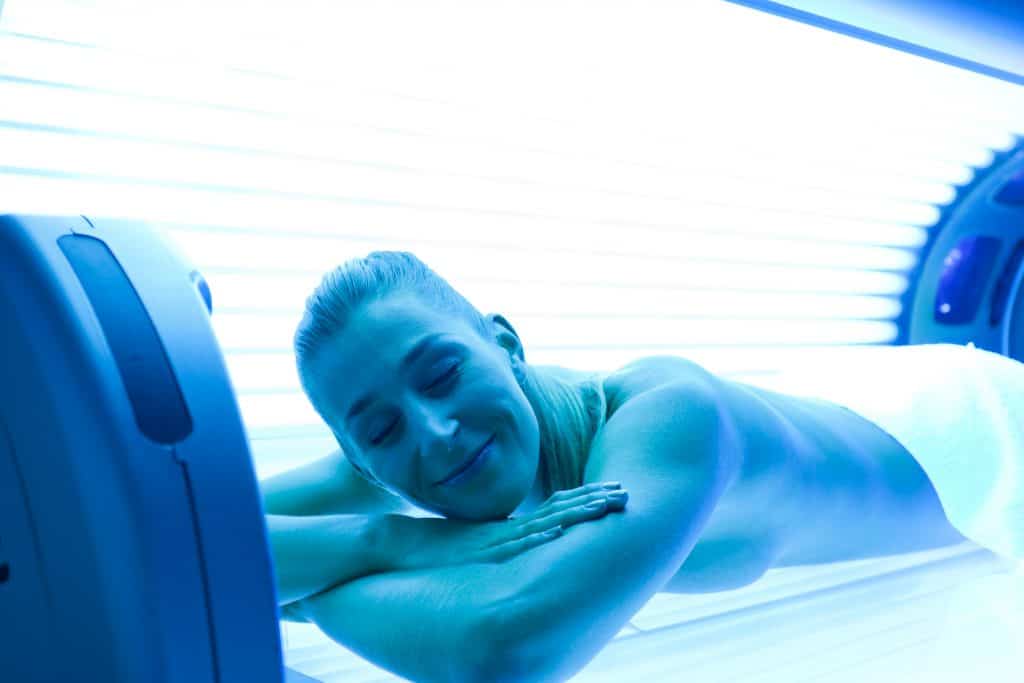
Because the lights are above and below you, and around you, you don’t have to flip from front to back in a tanning bed. So, now and again, twist in a different direction.
Consider the areas of your body where your skin is bunching up or you are bending, such as the base of your neck or the crook of your arms or legs. This will cause tanning wrinkles if you don’t readjust frequently enough.
READ MORE: How Can I Tan My Legs Naturally?
What Factors Determine the Tanning Time?
Summer is here, and you’re probably looking to get your beach body ready! Although getting a tan could seem as easy as spending a few hours in the sun, it depends on more than the time you spend sunbathing.
Some of the most significant factors that determine tanning include:
1. Your Skin Type
Your tan is heavily affected by your skin type. It determines how long you should stay in a tanning bed or be exposed to direct sunlight to get a tan.
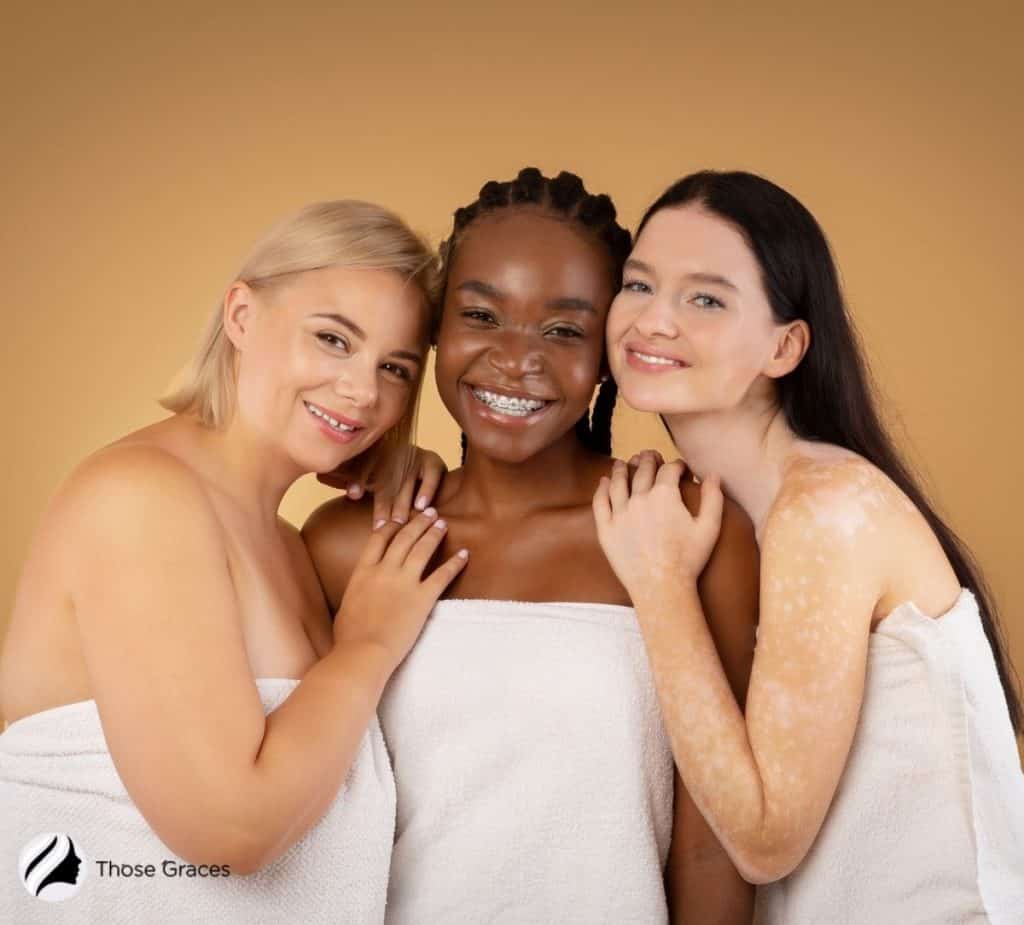
According to the Skin Cancer Foundation, your skin type determines your skin’s reaction to the sun. [7]
While people with darker skin tones are less likely to burn because of their higher melanin levels, their skin can still get sun damage.
According to the Fitzpatrick scale, people with pale skin do not tan easily as those with darker skin types. [8]
Your skin type determines how long you can be exposed to the sun before your skin starts to burn. And sunburns don’t look great with a swimsuit.
2. Sunlight Intensity (UV Index)
UV Index refers to a scale that shows the intensity of UV radiation from the sun. The UV index scale shows the actions to take and how much time it takes for skin to burn, depending on the exposure levels.
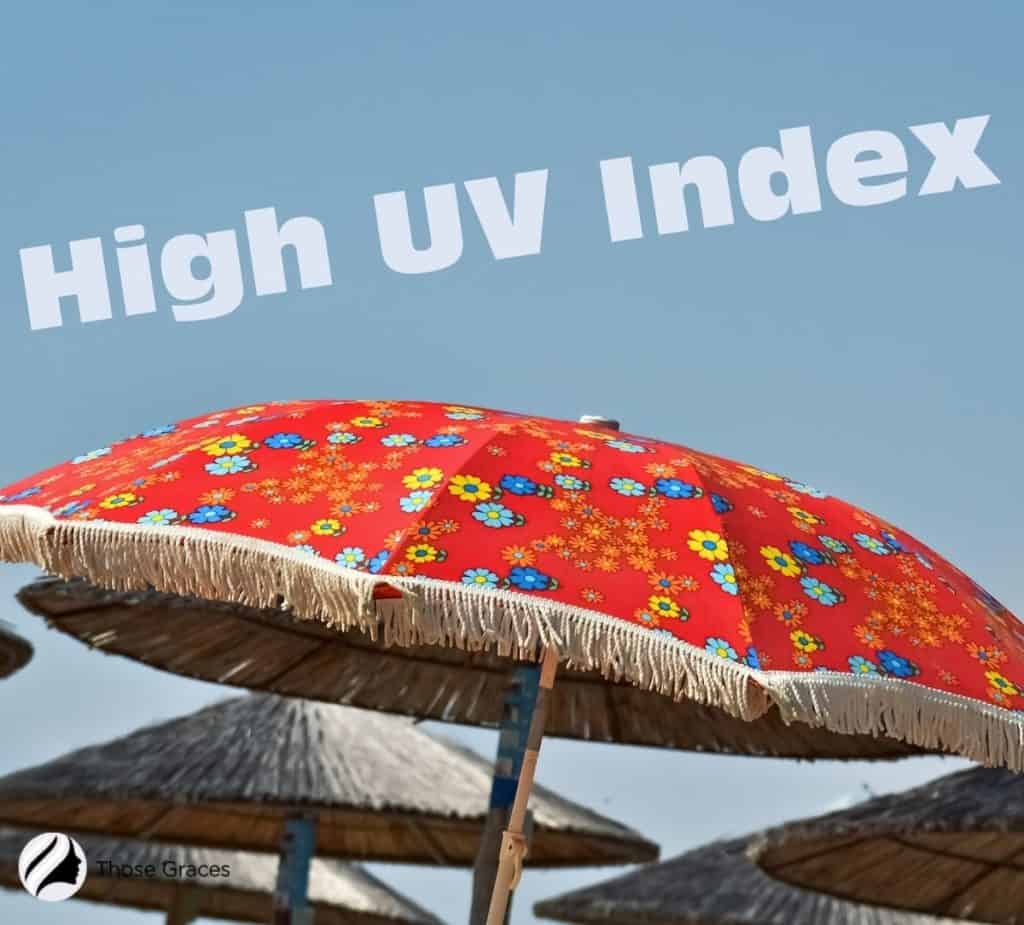
The sun’s rays are most intense during midday between 10 am to 4 pm. It can take between 30 to 45 minutes for your skin to start burning at this time.
If you are sunbathing at this time, ensure you seek shade while tanning and also wear sunglasses to prevent eye damage.
UV rays cause tanning by affecting your skin’s ability to produce melanin. Melanin is the pigment responsible for your skin’s color.
You should expose your skin to only moderate UV conditions to tan safely and evenly. Staying in the sun too long exposes you to harmful amounts of UV rays that can cause actual damage.
A moderate or high UV index is enough for most skin types to get a noticeable tan.
3. Time Spent Tanning
You should be careful what time of the day you go tanning. UV rays are not your friend, and even though you want to get a noticeable tan faster, you need to take certain precautions.

UV rays are most intense when the sun is at its peak. The time is between 10 am and 4 pm. But what time of day should you get a tan?
You won’t get a tan by sitting outside for ten minutes at noon. But you can get a rich tan sunbathing outdoors for two hours when the sun is less intense.
After 4 pm, the sun is less intense, and you can get a tan without risking sunburn or skin damage. You can also tan between 8 am and 11 am if you have sensitive skin and are more likely to burn.
How to Speed Up the Tanning Process
Want to get a quick tan? I listed some essential tips below.
- You should try to use oils, such as raspberry, coconut and avocado with SPF (naturally occurring). These effective oils can be used for SPF protection and to add moisture. But remember that they can’t replace your sunscreen!
- If an oil does not contain sun protection, never use it.
- When you’re going outside for over 20 minutes, use sunscreen right away. A sunscreen with an SPF of 30 will protect you from UVA and UVB radiation while still allowing you to tan fast. Apply a full ounce of sunscreen to your whole body.
- Consume beta carotene-rich foods. Kale, carrots, tomatoes and sweet potatoes are examples of foods that can help you get a tan without scorching your skin. Several studies suggest that beta carotene can assist people with photosensitive disorders in lowering their sun sensitivity.
- Consume foods that contain lycopene like guava, watermelon, papaya and tomato. Lycopene plays a major role in protecting the skin from UV rays naturally.
- Frequently switch positions. This will prevent one part of the body from being burned.
- Stay out in the sun for only the time it takes your skin to produce melanin. Tan is caused by the pigment melanin. Melanin has a cut-off point for everyone, which is typically two to three hours. Your skin will not darken once this length of time has passed. You’ll be putting your skin in danger if pass that point.
- Before you tan, do some preparation work. Your tan will last longer if you prepare your skin before going outside. Before you go tanning, exfoliate your skin. Exfoliated skin is more likely to flake off than skin that has not been exfoliated. After tanning, apply an aloe vera gel to prolong your tan.
- Attempt to get some shelter or shade. You’ll be less likely to burn if you take some rest, the relaxation from the severe heat will help protect your skin from any damage.
- Wear a top without straps, this will help you achieve a tan that is even and free of lines.
- Consider when you’ll be tanning. If you want to get a quick tan, go between noon and 3 p.m., when the sun is the brightest. However, always remember that the sun is at its hottest during this time, so the rays will cause the most damage, and this exposure is likely to raise the risk of skin cancer. To avoid burning, tan early in the morning or after 3 p.m., if you have extremely fair skin.
How Long Does it Take to Get Rid of a Tan or Fade Away?
Tans aren’t permanent.No matter what tanning method you use.
Tans can last anywhere between a few days to a couple of weeks. Spray tans, in particular, can last up to 10 days, depending on how dark a tan you want.
You need to prepare your skin by exfoliating and avoiding skin dehydrating drinks like alcohol to keep your tan longer.
Here’s a clip of someone timing how long their tan would fade off.
@olivia.the.pig18 draft but yeah
♬ Love Grows (Where My Rosemary Goes) – Edison Lighthouse
Does SPF Impact Your Tanning Time?
Yes. SPF (Sun Protection Factor ) does affect your tanning time. If anything, SPF is great for tanning because it means you can stay in the sun longer.
The higher the SPF, the longer it takes for your skin to tan. You are more likely to tan because your skin generates more melanin pigment the more it absorbs UV rays.
Unfortunately, studies have found that many people abuse sunscreen to spend more time in the sun tanning. [6]
While sunscreen allows for prolonged sun exposure, it also increases the risk of getting skin problems like melanoma.
FAQs
Are there any tanning risks?
Is it healthy to tan in the sun?
Skin cancer and skin aging are both accelerated by such damage.
Can I get a tan even if I’m in the shade?
What should you avoid before tanning?
How to make your tan last longer?
Does your skin stop tanning at some point?
A couple of hours of direct sun exposure can be damaging.
Conclusion
Your skin tone, environment, and proximity to the equator all influence the time it takes to get a tan. However, within one to two hours in the sun, most people will tan.
It’s crucial to keep in mind that both burns and tans take time to develop, so just because you don’t notice color right away doesn’t mean you’re not receiving any or that you should look for a lower SPF.
Skin cancer is a risk associated with any sort of tan. To limit the risk of harm, drink plenty of water, tan outside for a shorter period and wear at least SPF 30 sunscreen.
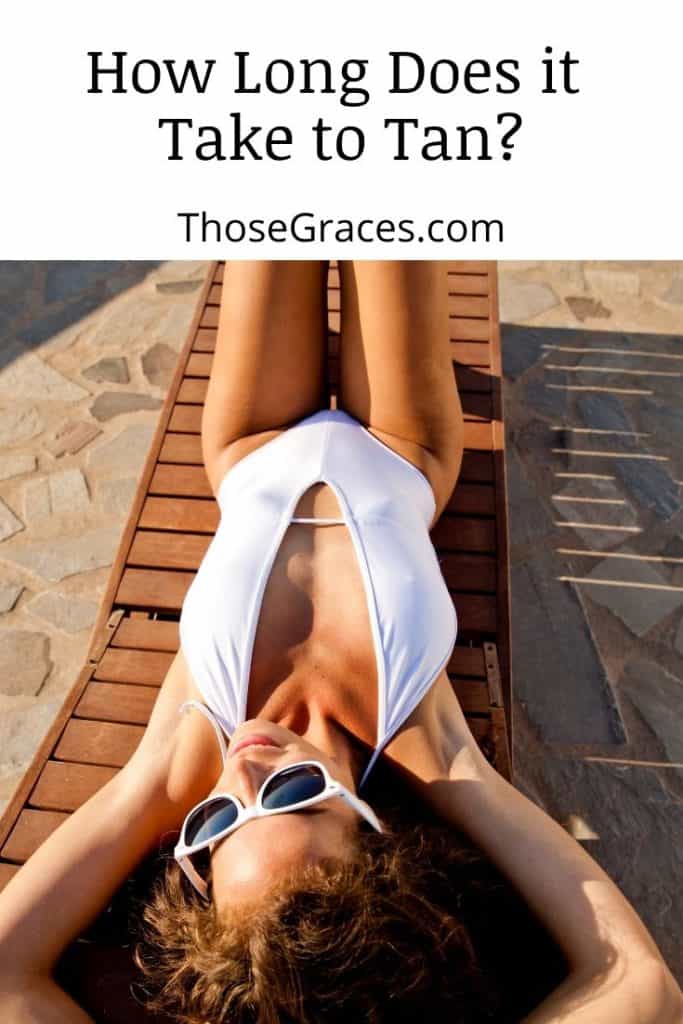
References
- 1. Heckman C. A Preliminary Investigation of the Predictors of Tanning Dependence. American Journal of Health Behavior. 2008;32.
- 2. Thune P. [Life style, sun-bathing and tanning–what about UV-A solariums?]. Tidsskrift for den Norske laegeforening [Internet]. 1991 [cited 2022 Mar 11];111:2085–7. Available from: https://europepmc.org/article/med/1871738
- 3. Petersen B, Philipsen PA, Wulf HC. Skin temperature during sunbathing – relevance for skin cancer. Photochem Photobiol Sci. 2014;13:1123–5.
- 4. DIFFEY BL. Use of UV-A sunbeds for cosmetic tanning. British Journal of Dermatology. 1986;115:67–76.
- 5. SUNSCREENS AND TANNING [Internet]. Available from: https://www.aocd.org/page/SunscreensandTanni
- 6. Autier P. Sunscreen abuse for intentional sun exposure. British Journal of Dermatology. 2009;161:40–5.
- 7. Skin Type [Internet]. The Skin Cancer Foundation. Available from: https://www.skincancer.org/risk-factors/skin-type/
- 8. Ward WH, Lambreton F, Goel N, Yu JQ, Farma JM. TABLE 1, Fitzpatrick Classification of Skin Types I through VI [Internet]. www.ncbi.nlm.nih.gov. 2017. Available from: https://www.ncbi.nlm.nih.gov/books/NBK481857/table/chapter6.t1/


